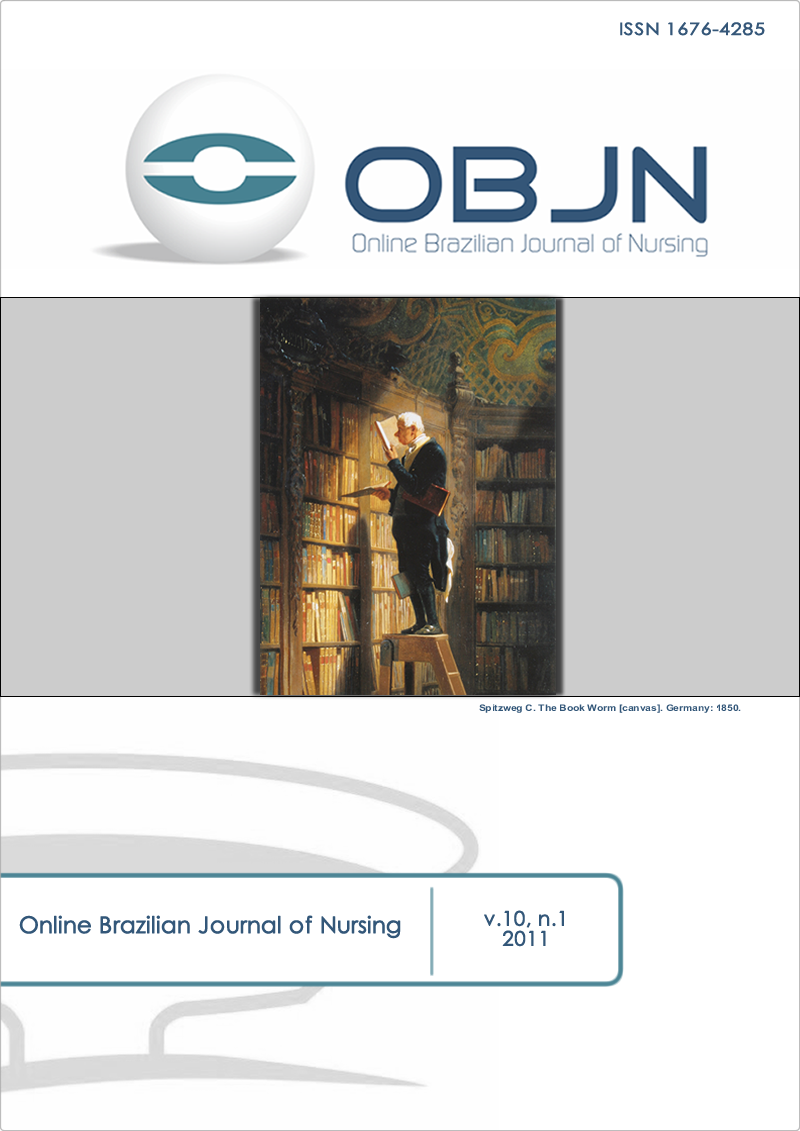Resumo
Objectives: to understand the organization of health care practices in the primary attention, considering it the coordinator of the health care network and to analyze in what way this network organization contributes to the development of best practices in health. Method: Grounded Theory collecting semi-structured interviews with health professionals, users and managers, constituting four sample groups. This article describes the results of the data analysis of the managers' group. Results: Construction of a theoretical model for the phenomenon: Framing the health care network: better care practices in the context of the public politics and for categories: Theoretical-conceptual referential for framing the health care network; Organization of care practices in the network perspective; Ordination of the attention: the primary attention role; Difficulties in the process of structuring the network; and, Characterizing better practices in the perspective of the health care network. Considerations: Health is a complex phenomenon resultant of the interactions experienced in the system of health care. The health care network, studied in these institutional contexts, reinforce the construction and development of best practices in health.Referências
KEEHLEY, P et al. Benchmarking for best practices in the public sector. San Francisco: Jossey-Bass Publishers, 1996. 251p.
KAHAN, B.; GOODSTADT, M. Health Promotion: Developing and Implementing a Best Practices Approach to Health Promotion. Health Prom Practice, v. 2, n. 1, 43-67, 2001.
KAHAN B, GROULX D, WONG JP. Interactive Domain Model (IDM) Best Practices Approach to Better Health: Follow-up to IDM Use and Impacts. Centre for Health Promotion Department of Public Health Sciences, University of Toronto, October, 2007. p.1. Disponível em: http://www.idmbestpractices.ca/pdf/IDM_follow-up_October2007_final.pdf.
OMS. Organização Mundial da Saúde. Guia para a Documentação e Partilha das “Melhores Práticas” em Programas de Saúde. OMS - Escritório Regional Africano Brazzaville, 2008. Disponível em http://afrolib.afro.who.int/documents/2009/pt/GuiaMelhoresPratica.pdf.
ERDMANN AL, MARINO SRA, MELLO ALSF, MEIRELLES B. Gestão das práticas de cuidado na perspectiva do cuidado complexo. Texto & Contexto. Enfermagem, v. 15, p. 483-491, 2006. Disponível em: http://www.scielo.br/pdf/tce/v15n3/v15n3a14.pdf.
SILVA S, MAGALHÃES H. Rede de atenção à saúde: importância e conceitos. In: SILVA S (org.). Rede de atenção à saúde no SUS: o pacto pela saúde e rede regionalizadas de ações e serviços de saúde. Campinas, SP: IDISA:CANASEMS, 2008.
BRASIL. Ministério da Saúde. Gabinete do Ministro. Portaria n. 399, de 22 de fevereiro de 2006. Divulga o Pacto pela Saúde 2006 – Consolidação do SUS e aprova as Diretrizes Operacionais do referido Pacto. Diário Oficial da União. Brasília, n.39, p. 43-51, 23 fev. Seção 1. 2006. Disponível em: http://dtr2001.saude.gov.br/sas/PORTARIAS/Port2006/GM/GM-399.htm.
BRASIL. Ministério da Saúde. Gabinete do Ministro. Portaria 4.279, de 30 de dezembro de 2010. Estabelece diretrizes para a organização da Rede de Atenção à Saúde no âmbito do Sistema Único de Saúde (SUS). Diário Oficial da União. Brasília, p. 89, 31 dez. Seção I, 2010. Disponível em: http://portal.saude.gov.br/portal/arquivos/pdf/portaria4279_docredes.pdf.
SILVA S. Rede de atenção à saúde: modelos e diretrizes operacionais. In: SILVA S (org.). Rede de atenção à saúde no SUS: o pacto pela saúde e rede regionalizadas de ações e serviços de saúde. Campinas, SP: IDISA:CANASEMS, 2008.
MENDES, E.V. As redes de atenção à Saúde. Rev Med Minas Gerais. 18(4 Supl 4): S3-S11. 2008. Disponível em: http://rmmg.medicina.ufmg.br/index.php/rmmg/article/view/96/75.
OPAS. Organización Panamericana de la Salud. Redes Integradas de Servicios de Salud: Conceptos, Opciones de Política y Hoja de Ruta para su Implementación en las Américas. Washington, D.C.: OPS, 2010. (Serie: La Renovación de la Atención Primaria de Salud en las Américas No.4).
BRASIL. Ministério da Saúde. Gabinete do Ministro. Portaria n. 648 de 28 de março de 2006. Aprova a Política Nacional de Atenção Básica. Diário Oficial da União. Brasília, n. 61, p. 71, 29 mar. Seção 1, 2006. Disponível em: http://dtr2001.saude.gov.br/sas/PORTARIAS/Port2006/GM/GM-648.htm.
CALDEIRA AP, OLIVEIRA RM, RODRIGUES OA. Qualidade da assistência materno-infantil em diferentes modelos de Atenção Primária. Ciênc. saúde coletiva [online]. 2010, vol.15, suppl.2, pp. 3139-3147. Disponível em: http://www.scielo.br/pdf/csc/v15s2/a18v15s2.pdf.
GOMES KO et al. Avaliação do impacto do Programa Saúde da Família no perfil epidemiológico da população rural de Airões, município de Paula Cândido (MG), 1992-2003. Ciênc. saúde coletiva [online]. 2009, vol.14, suppl.1, pp. 1473-1482. Disponível em: http://www.scielo.br/pdf/csc/v14s1/a20v14s1.pdf.
PEREIRA CRS, et al. Impacto da Estratégia Saúde da Família com equipe de saúde bucal sobre a utilização de serviços odontológicos. Cad. Saúde Pública [online]. 2009, vol.25, n.5, pp. 985-996. Disponível em: http://www.scielo.br/pdf/csp/v25n5/05.pdf.
GLASER, B. Grounded theory perspective III: theoretical coding. Chicago: Sociology Press, 2005.
STRAUSS A, CORBIN J. Bases de la investigación cualitativa: técnicas y procedimientos para desarrollar la teoría fundamentada. Medilén: Ed. Universidad de Antioquia, 2002.
COHN A. O estudo das políticas de saúde: implicações e fatos. In: CAMPOS G et al (org). Tratado de Saúde Coletiva. São Paulo: Hucitec; Rio de Janeiro: Ed. Fiocruz, 2006.
MACHINESKI G, LIMA M, BONILHA A, SCHNEIDER J. The users' perception in relation to health practices: a literary analysis Online Brazilian Journal of Nursing [serial on the Internet]. 2009 July 11; [Cited 2011 April 18]; 8(2):[about ## p.]. Available from: http://www.objnursing.uff.br/index.php/nursing/article/view/2272
BRASIL. Conselho Nacional de Secretários de Saúde. SUS: avanços e desafios. Brasília: CONASS, 2006. Disponível em: http://189.28.128.100/dab/docs/publicacoes/conass_progestores/sus_avancos_desafios.pdf.

